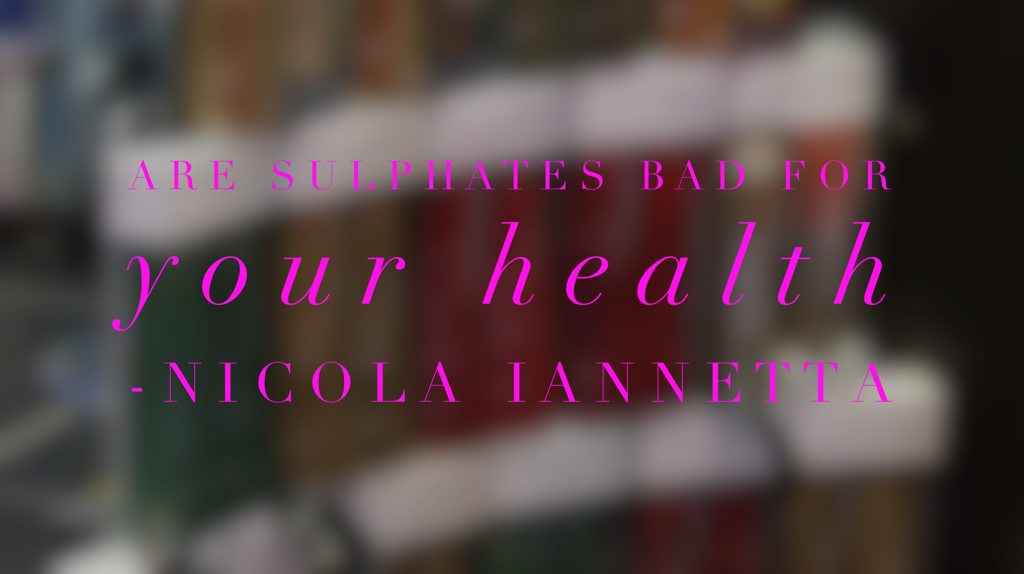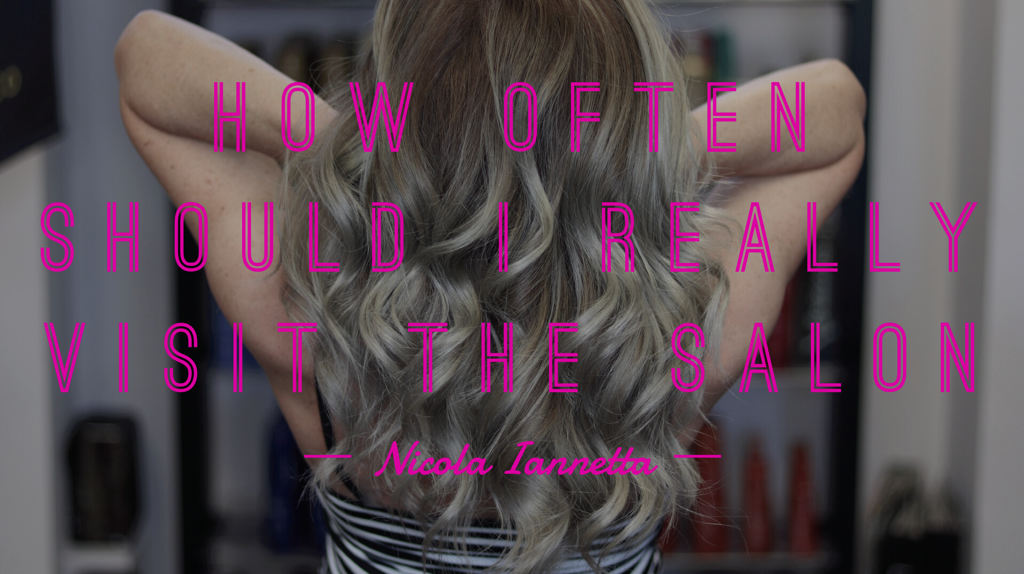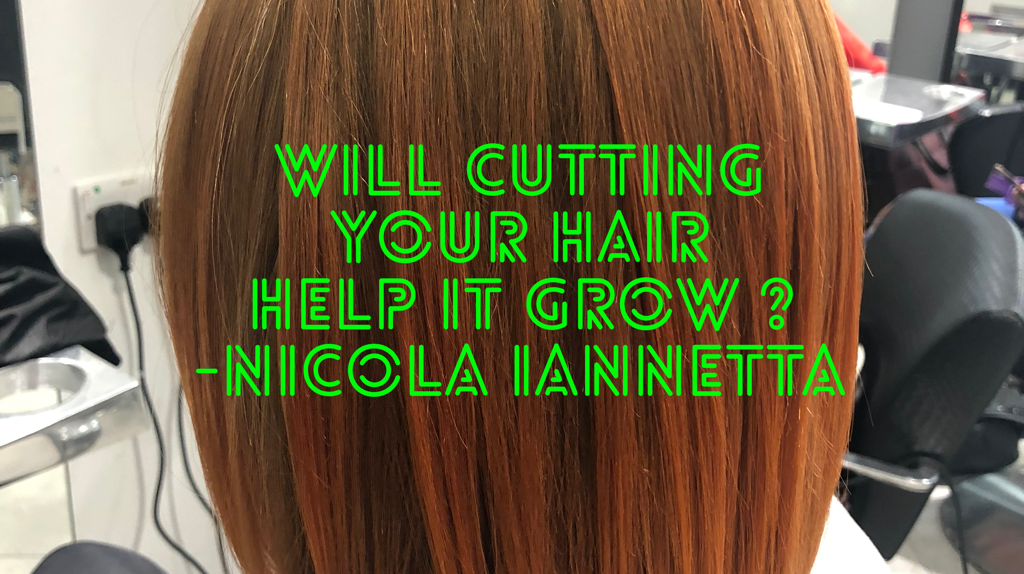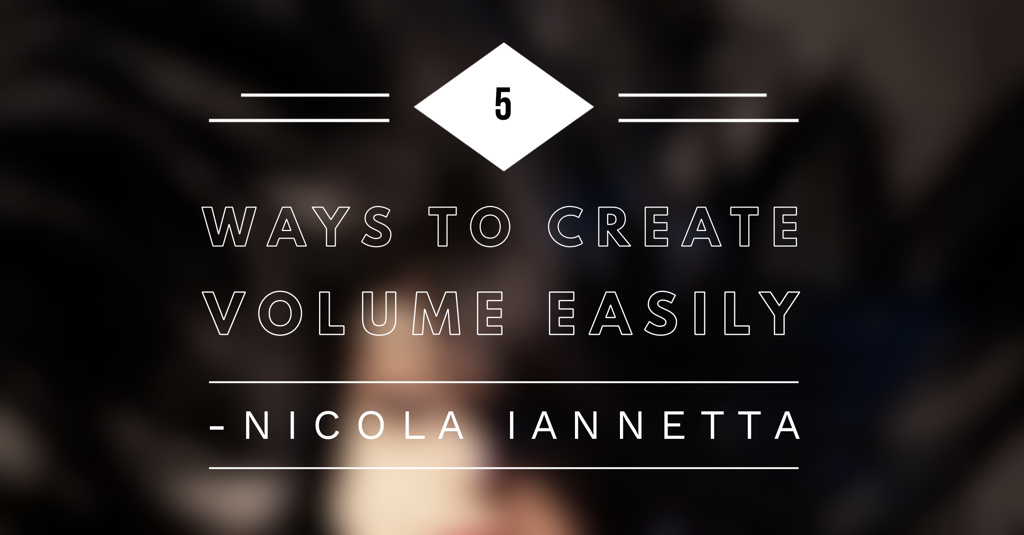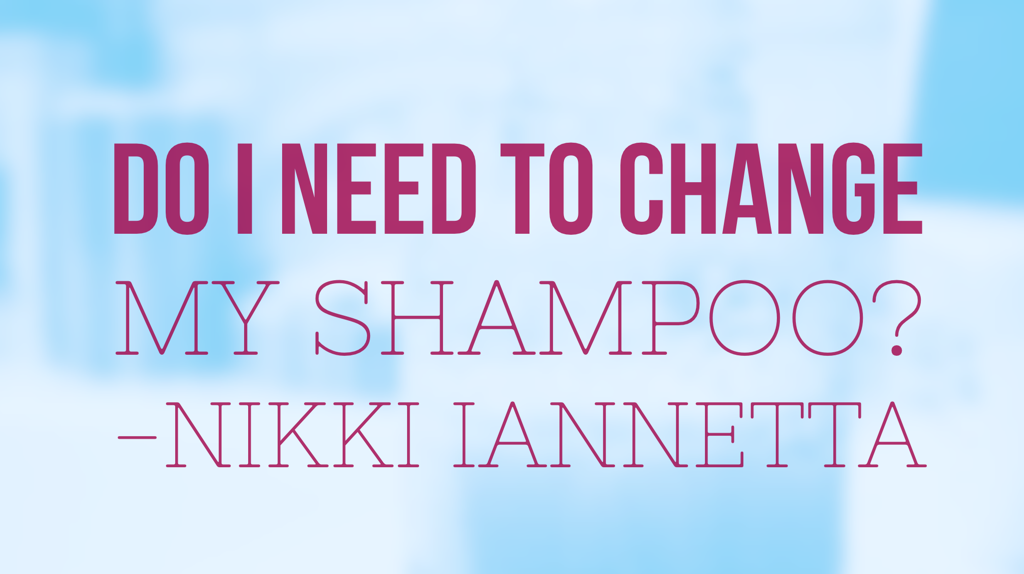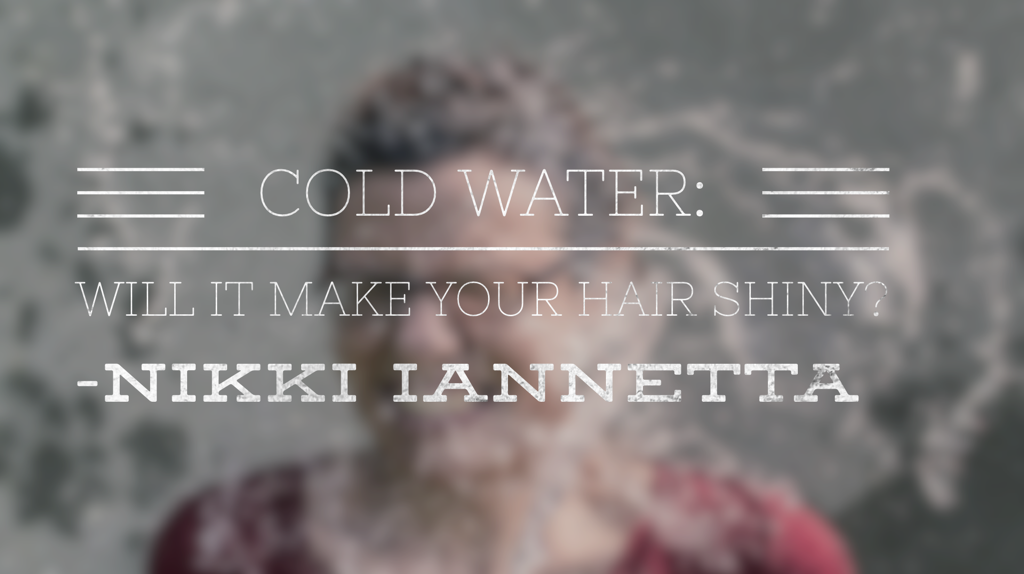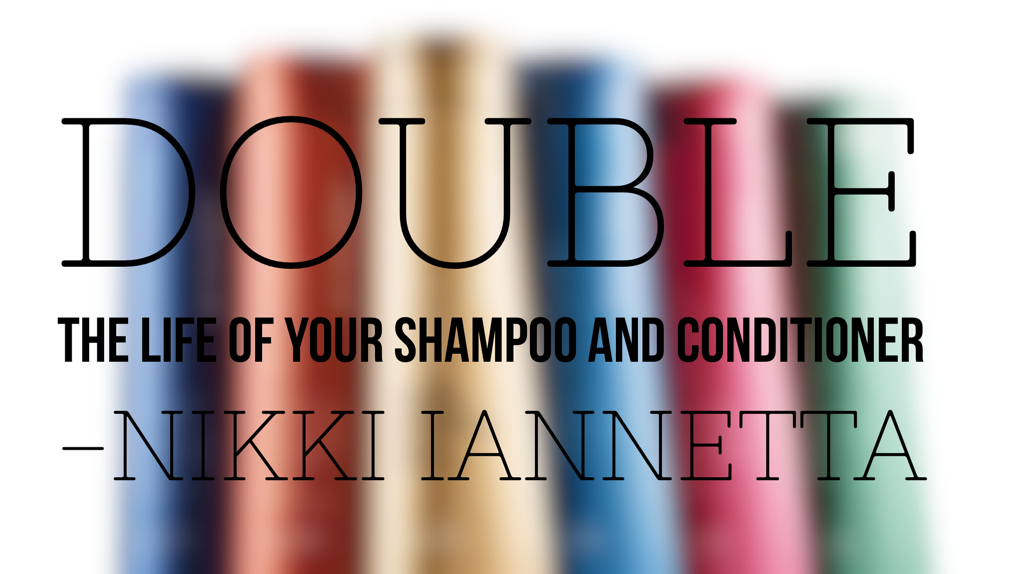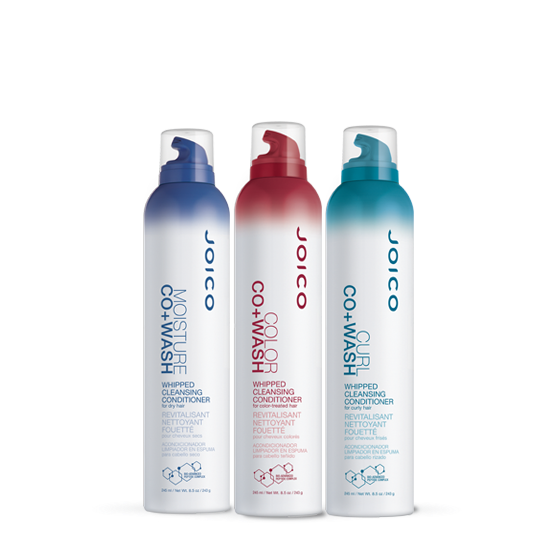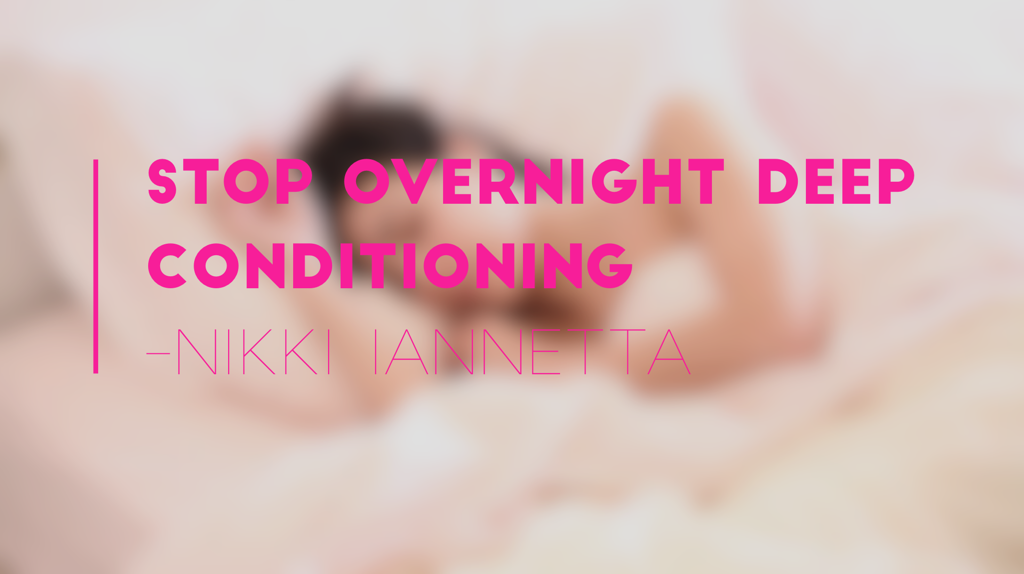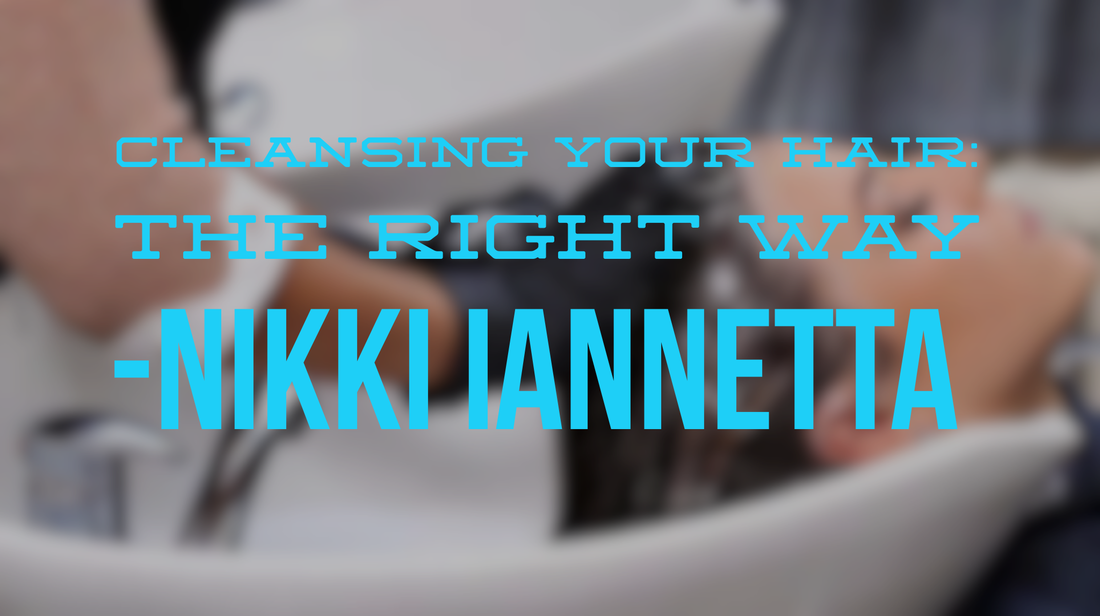|
Hi there,
Thank you for popping by, I'm sitting here enjoying the Italian sun whilst I write this weeks instalment of The Hairy Truth for you. listening to the crickets and drinking my water (I would liked to have said enjoying a glass of vino however I'm trying to be better health wise and well its wasted calories that I'd rather be used on food) and its hot here so water is the best liquid to keep me, my hair and my skin nice and hydrated. Today we are going to discuss how sulfates in our hair care effect our hair and skin. There's lots of comments around stating they may not be good for our health and others that claim they may be fading your colours and causing damage to your hair. So lets dive right in and find out what effect if any they are actually having.
WHAT ARE SULFATES?
Sulphates are surfactants that are found in almost all cleansing products, for skin, hair and general household cleaning. They are designed to separate grease and dirt from the host and as water passes over be washed away, they are also responsible for the foaming action we find when mixing them with water. They do this very efficiently and therefore are widely used across many brands.
The most commonly used sulfates are Sodium Laureth Sulphate (SLES), Sodium Lauryl Sulphate (SLS) and Ammonium Laureth Sulphate (ALS) and in many cases when a product claims to be sulphate free it's usually free from one of these not necessarily a surfactant itself. Most shampoos contain around 15% or less
DO THEY HAVE A NEGATIVE EFFECT ON YOUR HAIR, SKIN AND HEALTH?
There are quite a few rumours floating around regarding sulphates and how they effect our hair, skin and health. They are rumoured to be linked to cancer, be harmful to our hair and skin, cause irritation and fade your hair colour.
Are they linked to cancer?
This one is the scariest of the rumours and thankfully I can safely say that no, they are not linked to cancer and cannot cause cancer. There is no evidence that suggests they are linked to cancer, 'sulphate are not carcinogenic' says the American Cancer Association. Three further agencies have also rated sulphates as being non-carcinogenic; The occupational Safety and Health Administration (OSHA), The National Toxicology Program (NTP) and the International Agency for Research on Cancer. Do they cause irritation? As they are the best at separating oil and dirt that will then be washed away, this also means they will remove natural oils from the hair and skin, this is not necessarily a bad thing as our hairs naturals oils will hold onto dirt. They can cause slight irritation if left on the skin for longer than required or for those with sensitive skin. Higher quality shampoo's will use lower quantities as possible to minimise skin irritation and contain conditioners and their own oil compounds to replace what the hair loses during cleansing. Are they harmful to hair? Some sulphates are harsher and more abrasive to the hair and skin than others. Sodium Laureth Sulphates are gentler to the hair and cleanse efficiently without causing damage, others are slightly more harmful but most shampoo and conditioner ranges will have conditioning ingredients to counteract this. Do they fade your hair colour? It's a very common miss-conception that sulphates cause your hair colour to fade. This is not the case and has been scientifically proven, Some ranges go sulphate free purely for commercial reasons.
ARE SULPHATE FREE BETTER FOR YOU THEN?
In order to be sulphate free but also do they same cleansing action there has to be a substitute ingredient, which will do the exact same job because after all they need to cleanse your hair and skin in order to be able to remove dirt and oil from your hair and skin. They have the same effect on your hair and skin and in some cases are as harsh or harsher on them. They can however be less irritating so there is a benefit in some ways.
So there you have it.
Sulphates are brilliant at why they do, some are slightly harsher to the hair and skin than others but all in all many of the bad press around them is not true and mainly hearsay. Your slylist can recommend the best product to suit your hair type however whether it is sulphate free or not shouldn't really need to factor into it. Until Next Time : Happy Hair Day Nicola Iannetta x
0 Comments
Hi there and welcome back to the Hairy Truths.
This week I placed a poll up on my instagram account to see what you wanted to read about this week and the result actually came back 50:50, so I have decided to write this one first as it was the first that got voted for and next weeks instalment will be to go through and untangle the theories and ideas around salon vs high-street care and styling products.
So this week whilst we make the most of the beautiful sunshine here in the UK we are going to talk about how often you really should visit your stylists for your trims, colour touch ups and treatments in order to keep your hair in tip top condition and ensure it's as healthy as can be along the way.
Cutting - 6-10 weeks depending...
As briefly mentioned in last weeks instalment Does cutting your hair make it grow you should really have your hair trimmed every 6-8 weeks to ensure all split ends are removed and do not develop further, as this can lead to thin and fragile ends over time if left.
If you are growing your hair and you treat it well; this means you're following all your stylists product and care advice, then, you may be able to stretch your visit to 8 - 10 weeks but this is really best to check with your stylist as not all hair types can stretch that long. Finer hair may not be able to do this as they have 50% less protein make-up and internal structur than thicker hair types meaning they are more prone to damage and ware away quicker. So if you have very fine hair it is important you visit your stylist religiously every 6 weeks to keep your hair in as healthy condition as possible. Blonde Root Touch Ups - 4 weeks
Everyone always refers to blondes as being high maintenance, and they are! Keeping your blonde fresh is not an easy task and requires regular trips to the salon and a good home-care regime.
Firstly - your touch ups need to be every 4 weeks. This is to ensure your regrowth is at the optimum growth to avoid banding. The area needs to be around 1cm to ensure you get a nice clean and even result due to the heat from your scalp effecting your final colour result, further than this will create bands to form where the colour/bleach lifts slightly differently due to the heat indifferences and those bands will be warmer and/or darker than desired so if you leave your intervals longer than 4 weeks your stylist has to allow for this. The area furthest away will need applying first and then your stylist will need to go back through and apply a new batch of colour to your root area ensuring an even lift, this requires more colour and double the application time on your visit and will therefore probably be reflected in the cost too. Secondly - your home-care, Never ever cheat and go cheap, Blonde hair endures more stress than other colour so your home-care is even more imperative and will require more looking after than others, and sadly this is where most people slack. You've paid for your colour please don't neglect it now. Using lower grade products will leave your hair feeling dry, dull and brittle as they will not give your hair what it needs, your colour will have a lower longevity and when you re-visit the salon for your touch up your hair will have become more porous which will mean your colour will take unpredictably and your stylist will have to allow and plan for this when creating your colour formula. Your stylist can only give you the information you need to ensure you get the most from your beautiful blonde hair, what you do with that information is up to you. Those that follow their stylists advice reap the rewards with their blonde hair and future visits to the salon. Tint Root Touch Ups - 6 weeks
Colours on darker levels can benefit from 6 week intervals as a realistic timeframe to ensure optimum colour results. Longer than this will require your stylist to apply mid range area first, allow to develop for a short time and then go back through and apply from your scalp with a fresh mix, Meaning more time is required and more product so will most likely be reflected in the cost.
If you stick to 6 weeks you may find, like my guests do, that you won't need your whole colour refreshing so usually my guests can expect to have 2-3 regrowth sessions before a full refresh is needed. This is when you follow your stylists aftercare advice to keep your colour for longer. High and Low- lights in foils - 6-8 weeks
Foiling allows for heat to be retained a little better than non-foiling techniques so you can get away with leaving your visits a tad longer, 6 weeks is best but sometimes you can get away with up-to 8 weeks. Longer than this may require more time and product being used due to the heat indifferences so again will most likely cost more too.
Balayage, Ombré & baby lights - 20 - 36 weeks (6-9 months)
These low maintenance techniques usually cost more to begin with due to the timing they can take to do initially and the amount of product that is used during your visit however they have a much longer interval period between touch ups. This is due to their perfect natural grow out pattern and blended results so this means you can go as long as you like until you have your balayage / baby lights brought back up again. On average this is usually every 6-9 months for my guests.
However this doesn't mean you can neglect your hair in between, you still need to take proper care of your hair and have your trims as well as refresh your tones if your choose too. Many of my guests have fun with fashion tones between their 'full works' visit. Fashion Tones - 1-8 weeks
The best thing about fashion tones is that they change so frequently and keep you fresh. Usually they are on a much more pastel tonal level meaning the time in which they last is very low and very difficult to give a timeframe on their longevity. Usually they last 1-4 weeks depending on their strength and the health of your hair. Those with stronger tonal values will last much longer, usually around 8 weeks. Sometimes longer than this.
If your are like me though, this allows for you to have fun without too much commitment, Peach this week, violet next and silver three weeks later, the choice really is yours and you can have as much fun as you like with it. Conditioning Treatments - 1-12 weeks
This is a difficult one as it depends on the health of your hair and what treatment we are discussing, however, from my menu you have a choice of 3:
So there you have it, a guide to how often you should see your stylist. Your visit intervals will completely alter depending on what colours you have and your home-care so your stylist is always the best person to ask to ensure you are following the best timeframe and hair journey for you.
Until next time : Happy hair day Nicola Iannetta.
The age old question finally getting answered.. Will it be as you predicted?
You've heard it many times before, most likely from your stylist and/or your parents: "to grow your hair you need to cut it", "regular trims will help your hair grow quicker" or "cutting your hair will make it grow faster" any of these sound familiar? I hear this all the time from my guests who have been told this in the past. So I explain to them as I am to you now.
There is some truth in this little white lie but a little more goes into it that just a trim.
So how does it actually work?
As I've mentioned before, whilst hair grows it is only a living cell whilst it's inside the scalp, once it passes the skin it's no longer living. This means it is completely subject to the environment, heat tools, chemicals and anything else that touches it without the ability to repair itself like your skin and body can.
Hair on average grows 1 inch every 4 weeks, lets just think about that for a second, How old do you think that makes your hair? If it is to your jawline it's roughly 12-14 months old, if it's nearing your underarm then it will be around 2 years old, so on and so forth.
Hair is very strong and resilient however if we don't look after our hair, it breaks or wears away. As it splits it keep splitting getting finer and finer and more fragile from the ends upwards, by trimming those split ends you stop them travelling further up the hair so the hair stays stronger and full to the tips so it doesn't break or become thin and fragile, meaning as it grows from your scalp it maintains length and thickness through to the tips therefore growing quicker.
So there you have it, cutting your hair does actually help it grow. It won't speed up the growth from your scalp, but you will keep the hair that it grows. You should have regular trims every 6-8 weeks to ensure you keep the split ends at bay.
Your hair is as individual as you are, with it's own stresses and it's own story to tell. Using the right home-care and styling products will ensure your keep your hair healthy and strong whilst maintaining length and thickness.
I hope you enjoyed this weeks instalment of the hairy truth. Until next time : Happy hair day Nikki
Hi there and welcome to this weeks instalment of The Hairy Truth.
This week as the title suggests we are talking the easiest and quickest ways to create volume in our hair. Whether you have fine hair or thicker hair but would like to add volume this weeks tips will help you achieve that salon volume at home. TIP #1 - UPSIDE DOWN
This is the quickest and easiest way to create instant volume.
HOW DO I DO IT? Simply tip your head forward and dry your hair, as much as possible you need to keep the dryer up above your head drying from the top (which will be your underneath section). Use a brush to keep your hair smooth and detangled. HOW DOES IT WORK? As you're drying the hair against it's natural growth pattern this creates volume at the roots. HOW LONG WILL IT LAST? This method does last quite a while but mostly it will depend on the thickness and length of your hair. Heavier / thicker hair will drop quicker than shorter / finer hair types. Lasting anything from 2 hours to a day. HELPING IT LAST LONGER: Set your style in place with a strong lightweight spray like joico's flip turn or power spray to get the best longevity from your style. TIP #2 - VOLUMISING SHAMPOO & CONDITIONER
Another great way to add volume would be to use a volumising shampoo and conditioner. You can follow my guide on how to correctly wash your hair to ensure you are getting the most from your shampoo and conditioner.
RECOMMENDED PRODUCT Joico's Bodylux volumising shampoo and conditioner: increase hair density by upto 40% and furthermore the lightweight conditioner will not weigh down your hair. Add this to drying your hair upside down, and you have longer lasting volume that holds for longer. TIP #3 - VOLUMISING ELIXIR
Ever wonder why when you create volume in your own hair it doesn't seem to last as long as it does from the salon? OK OK OK we have training in the salon to blow-dry and create volume however we also need tools to help your hair stay the way we style it.
One of those tools is Joico volumising elixir. Added to the Bodylux shampoo and conditioner your hair will reach new heights and have up-to 40% more density per strand. Make sure you lock it all in with a strong but lightweight hairspray like our power spray. TIP #4 - BACK COMBING
Back combing is a sure fire way to create volume and looks amazing when done well. Not done well it looks a little like a birds nest. So lets chat about how to do it well:
HOW TO DO IT First you need the correct brush, a soft, thin bristle brush also known as a backcombing brush. Take a 1 inch section from your crown and lift it up, Comb back the way from the middle of the length, this will create a tangled look at the root Repeat a couple times up the length of the hair. Pick up a new 1-inch section just underneath and repeat. You can continue this over just your crown area or throughout your whole head. Smooth over. This is the important part to ensure you don't leave what looks like a nest on your head. KEEP IT IN PLACE Once you have a nice smooth surface spray in place with a strong but lightweight hairspray. I highly recommend either Joico power spray or Flip turn. TIP #5 - SLEEP IN ROLLERS
This step may be one of the trickiest but once you get the handle of it they work really well.
HOW TO DO IT Wash your hair using a volumising shampoo and conditioner, Squeeze out all excess water with a towel and add a volumising product and one with hold. Dry your hair, 95% dry, as smooth as possible with volume at the root area if possible. Take 2-3" sections, comb straight up, take a roller and place at the tips. Roll to smooth round then roll down the hair to finish at the root. Pin in place if it doesn't stay. Go to sleep. DRESSING OUT Take out the rollers one by one, twist each section to keep it from going fluffy. Once you have got all the rollers out, run your fingers through your hair to calm and seperate. If your want it curly, leave it like this. If you want it smooth then blowdry or straighten to smooth. HOW LONG WILL IT LAST This method will hold for the longest. It will also take practice to get it right, so have patience and don't give up. You'll get it. RECOMMENDED PRODUCTS Prep: Joico Bodylux shampoo & conditioner or Sexyhair UK big volumising shampoo & conditioner Style: Joico Blux volumising elixir and/or root boost, or Sexyhair UK volumising gel Hold: Joico powerwhip or joiwhip, Set: Joico power spray or Sexyhair spray and play harder.
Now you have 5 ways to create volume and hold it in place for longer. Put all these tips together and you have a recipe for the longest lasting volume you have ever seen. I hope you give them a try and let me know how you get on.
Until next time : Happy Hair Day Nicola Iannetta
For those who skim read:
- Dry your hair upside down - Use a volumising shampoo and conditioner - Use a volumising product - Add backcombing - Try sleep in rollers - Spray in place with a lightweight strong hold hairspray
Welcome back,
I hope you have had a fabulous week and managed to keep the children entertained during half term. Today you can sit back and relax with your little bit of me time. This week we have a question that pops up from time to time that we are going to uncover it to see if it is in fact a myth or if there is any truth in the idea.
SHOULD WE ALTERNATE OUR SHAMPOO?
You've heard it before 'you should change your shampoo every so often' or 'your hair gets used to a shampoo and conditioner so you should change it' and many more along these lines.
This idea comes from the observation that sometimes your hair may start to look dull and lifeless, no longer have shine and lack lustre or becomes dry, brittle and fragile, I bet you've had this happen in the past. You mention this to a friend who suggests altering your shampoo and they recommend one they have been using lately that they love so you give this a try and within a few weeks the same thing happens again. Why is this?
Our hair, much like our skin, is effected by many elements and has 3 main causes that effect it's condition and shine factor. Heat, Chemical and Environmental. Also just like our skin it shows these changes by the way it looks and feels.
HEAT DAMAGE
Heat damage is due to heat appliances like your hair dryer, straighteners, tongues, wand, crimpers and styling aids. You should always ensure you are protecting your hair from the heat being used, The best way I describe this to my clients is to think of your skin... would you place the straighteners plate on your skin when its hot? No, of course not, not without having something in the way to stop it burning, this is what thermal protection is to your hair. It's a protection from all heat sources applied directly to your hair between washes.
CHEMICAL
Chemicals like colours, relaxers, perms and colour removers can cause stress to your hair and without the correct knowledge of how to rebalance the hairs levels this stress can begin to cause damage to the hair structure. Especially if over processing occurs.
ENVIRONMENTAL
Basically the atmosphere, wind, rain, sun (UV rays) etc can also effect our hairs condition, All of joico contains protection again UVA and UVB rays because this factor has a much larger impact than we realise on our hair.
Taking all this into consideration this is why in my salon we are a prescriptive salon and we assess your hair on every visit to ensure the product you're using is still meeting your hairs needs and is still fit for purpose. It is my belief that all salons should be prescriptive but not all see the importance sadly. However you will be hard pushed to find any salon that only has one shampoo for all, as one shampoo does not suit all hair types and meet the needs of every head.
So the question still remains - why does our hair go dull or lifeless and sometimes feel dryer?
Usually it's down to how we have been treating it, If it is going dull this is usually a product build up created by heavy silicones within non-professional ranges or the dryness can be because many use harsher surfactants within their non-professional ranges. Joico are my chosen range for many reasons, one reason is because they use very mild surfactants in their products and all of their ingredients are water soluble meaning with every wash nothing is left on your hair that shouldn't be so cannot create a build up. So if your hair changes in it's needs this will be due to changes to the environment or your regime then you may need to alter your shampoo at this point but your stylist will be best to advise on which to use. If your hair does not change then you do not need to alter a thing. Many of my clients have been using the same shampoo for years and not needed to alter some have a couple they alter between depending on how they have treated their hair and what it's needs are.
So I hope that has answered the age old myth about whether or not you should be switching up your shampoo's or not.
Thank you for taking the time out to have a read of this weeks instalment and I look forward to seeing you again next week. Until next time : Happy Hair Day Nikki Iannetta.
If you skimmed - here are the important bits
- Hair can alter much like our skin - Hair condition can be effect by heat appliances, chemicals and environmentally - Prescriptive ranges are designed to meet your specific hair needs - Your stylist should be assessing your hair every visit to ensure you're still using the best product for you current hair needs. - No salon will have a one shampoo for all and as no two heads of hair are the same and have different needs. - If your hair is going dull it's probably your shampoo contains heavy silicones and is causing a build up - If your hair is dry it's probably due to your shampoo containing harsh surfactants - Joico use mild surfactants and contain water soluble ingredients so do not build up on the hair - If your hair is happy don't change your shampoo if it's in need of something speak to your stylist.
Hello!! This week I wanted to talk about the new craze that hit the market the back end of 2017, I thought it was nuts and paid no attention due to it being tresemme's idea (when I type that name my laptop wants to correct it to 'tiresome' which I find very adapt and amusing but thats for another day, Today, I want to talk fact, I like facts and science and science is fact so lets talk about hair and what effect this method really has on our hair and why you should stop doing it. Why is everyone shampooing after conditioning these days? We've had many a strange idea pop up over time. This is another of them and I have been scouring the internet to find some 'real talk' about the effect of conditioning before shampooing. What the believe is vs what the reality is and what really happens when we do this. I've seen it a million times. Mainly from non-professionals all talking about the reverse shampoo effect. This means conditioning before your cleanse. 4 weeks ago we talked about the correct way to cleanse your hair and scalp and now we're discussing the effect of doing this in reverse. Switching your routine is believed to create a voluminous, light weight feel to the hair and loved by all those fine heads out there, those with thicker coarser hair types are advised to condition, cleanse, condition. The teachings I've seen discuss how conditioning prior to shampooing can prime the hair ready for cleansing, but somehow magically keeping the nourishment from the conditioner and the shampoo knows not to cleanse it back off again, when that is a cleansers role. You may be able to hear my skeptical tone here. We have previously chatted about the importance of your conditioner and what it's real purpose is, and, why it's the final step to the cleansing process. It all comes down to the PH levels of our hair which control the cuticle layer (outer, protective layer) of the hair, rebalancing and neutralising or lowering any alkalinity within the hair to allow them to lye smoother creating a shiny, healthy , touchable finish, resetting our hair closer to it's correct, natural PH. Whilst cleansers clear our hair of any product build up, grease (natural sebum) and oils, anything that is lying on the hair, Most salon professional cleansers are minimally above or within the higher range of the natural hairs PH to allow it to open our cuticles slightly and pulls away any grime, dirt or product build up. Without following with a conditioner we are not rebalancing our hair. Which will leave it fluffy and feeling thicker, or even have a little more texture, however this also means it will be more knotty, tangly and rough feeling in some cases. Most fine haired ladies and gentlemen don't use conditioner, to help it feel thicker that and avoiding going greasy too quickly. But what is the real story here? Is it that all hairdressers are mad advising us we need both or can we really skip this step? So, I've explained what a conditioners purpose is and what a cleansers (shampoo) role is, so when we switch them up by doing the conditioner first, we are washing off our conditioner and leaving our hair cuticles raised by opening them up to the elements without any protection. If our cuticles are left raised our hair is prone to damage, it looks dull and lifeless and will not hold a style. Also it cannot protect our internal structure including colour molecules and our colours could fade a lot quicker. Finer hair is weaker and more prone to damage than thicker hair types meaning it actually needs a good condition more than most and ALL hair types need to be conditioned too. It's like toning without moisturising, your skin feels tight, dry and taught. You need to condition last. Fine hair contains 50% less protein than thicker hair types which is why it's prone to breakage and needs caring for more so if you think about it. The key to looking after your hair is knowing what it needs. The person who knows this is your stylist. I have found my JOICOs Body-lux range to be a big hit as this range is specifically designed for finer hair types wanting to create volume and lightweight finish whilst protecting and looking after their hair. Those of my ladies who are still undecided about conditioner do love our leave in treatments as they are super lightweight! So in conclusion, My thoughts on this idea are fairly straight forward... it's rubbish, but it is born through a need, a need that joico have cracked with body-lux. So if you're looking for volume and care we have you covered, they increase the density of your hair cleverly ensuring all your hair is protected.
I look forward to next week and I'll see you then Until next time : Happy Hair Day Nikki Iannetta xx
Today I have an interesting one for you, so grab a quick cuppa and lets get started,
This week in the salon we have had quite a few colour changes and I have been asked on a couple of occasions about doing a final rinse in cold water, does it really help with shine and is there really any health benefits of this for our hair? As this is not the first time I have been asked this I decided to delve in a little deeper and do a write up on it. This is a topic that I can say most likely divides the hair world a little. I see it pop up numerous times in hair feeds across social media platforms as well as blogs and tutorials. So today I am going to give you the facts (we get a little sciencey but don't worry it's only briefly and all explained) and you can make up your own mind before I give you my opinion.
Today there will be many people across the world finishing their morning showers with a, lets face it, very uncomfortable, heart stopping, take your breath away final rinse of cold water. You know the one where you try to avoid the water hitting your body, only your hair. Yes I have tried it in the past before joining the hair professionals and if you've never tried it, it's not a fun task, although maybe should be tried just to be able to put it down as a life lesson. Especially if you're like me and hate cold.
OK so WHY are people doing this? Well, It's because it is believed to make your hair shiny. But is it true? I decided to dive a little into this subject and did a little extra research for you which brought up an interesting point. First I looked into where the belief originates and if it has any merit. This idea comes from the fact: cold closes the cuticle (all be it minimally) Thus creating the belief that a cold water finish will close the cuticle - making it shinier. You can understand the idea, i mean, it does make sense when you put it like that. However there is more than just what meets the eye. Now we know the thought process behind this popular belief let's look at the facts to see if they back it up. When we talk of opening and closing the cuticle layer in professional terms, it's all comes down to the PH level of a product, the temperature of the water has a very minimal effect on the cuticle in comparison, think of the cuticle as a door if you will. Anything we do as professionals always revolves around manipulating the PH level to either open or close the cuticle layers. A higher PH level will swell/open the cuticle and a lower PH level will de-swell/close the cuticle. We should always rebalance the natural PH levels at the end of any service. So this is why when you visit a salon all the shampoo's, conditioners and styling products are PH controlled? Exactly! They are designed to either rebalance or maintain the healthy PH levels of our hair, pre or post service. Ensuring it stays healthy and shiny. The product used to finalise the cleansing process is the conditioner and this is primarily what is responsible for closing the cuticle and creating shine. Not the water temperature. A very interesting fact for you: once your hair has grown past the scalp it is no longer supplied with blood and is technically dead tissue. However because follicles need blood supply you could be causing damage to your hair follicles without realising as cold water will actually constrict the blood capillaries in your scalp. The capillaries carry vital nutrients to the hair follicles, so in theory, you could be constricting the growth and production of healthy hair. The idea of cold water aiding in shiny hair has never really made any sense to me, even before I understood what actually had an effect on our hair, because if we think logically for a moment - a cold water rinse is then usually followed by a hairdryer (heat) and possibly straighteners (heat again) or another form of (heat) appliances. So to me the best time to use temperature logic would be at the very end with a cold blast of the dryer to lock in your style, surely. Another interesting fact is one I learnt during my training all those years ago, all about how PH levels actually effect our hair and what PH certain items/products are. I was surprised to find out water has a PH slightly higher than our hair so hot or cold wouldn't really make a difference at all. Using a good quality conditioner will close the cuticle due to the PH level being designed to be perfectly balanced for our hair. So does a cold water rinse make our hair shiny? in short: No, No it doesn't, Not really.
So there you have it. You can stop with the horrible, heart stopping, take your breath away cold water rinses in the morning and just invest in a quality conditioner. My favourite ranges are Joico which is my salon chosen brand, and Sexy hair UK, Both are amazing ranges, designed specifically for your hairs needs and perfectly PH controlled. Speak to your stylist, they will be best suited to advise you on which is best for your hairs needs.
I hope you found this weeks instalment as interesting as I did. I just love this kind of thing. Science, colouring and hair theory are my fave topics. Let me know if you have any questions or ideas to talk about. I have over 100 in line but I may not have thought of yours so please do share. Until next time : Happy hair day. Nikki Iannetta. If you skimmed : The important bits - Cold water is uncomfortable and takes your breath - It is believed to close the cuticle creating shine. - It in-fact could be causing damage due to constricting the blood capillaries - PH levels effect the cuticle opening and closing - Conditioner is designed to re-balance. - Conditioner is primarily responsible for opening and closing the cuticle. - Best ranges I recommend are Joico and sexy hair uk. - Speak to your stylists for best advise for your hair.
Did you miss last weeks instalment? We talked about how you can DOUBLE the life of your shampoo and conditioner!
Jump on in to find out more
Hi, welcome to The Hairy Truth.
I hope by now you're getting in the swing of things once again and you haven't broken any of your resolutions just yet, but if you have, don't give up. Any change can always takes us some getting used too so remember, you can't fail if you never give up trying. This week I bring to you a very interesting realisation. One that seems to have taken America by storm and has slowly began to gain traction over here in the UK. It will also save you money.
What if I told you, you could double the life of your shampoo with just ONE product
would you believe me?
To correctly care for our hair we need to cleanse and condition on a regular basis. Some of us every other day, some every day, some every 2-3 days (like me) some once a week.
On average your shampoo should last around 3-4 months and your conditioner double this at around 6-8 months, based on 2-3 washes a week. 2 cleanses | 1 condition. OK so lets think about this for a quick moment, that means buying just 4 shampoos and 2 conditioners per year. Surely that can't be right can it? Well it is. With salon professional it's all about quality over quantity but that's a chat for another day. Today we are chatting about how you get even more from your cleanser and conditioner. So when they last this long why would we care to double their longevity? They already outrun any non-professional brand as well as being designed to work harmoniously with your hair. Well we all like to know how our money can stretch a little further. so... Would you like to be let you in on this little secret? It's all down to Joico's amazing Co Wash
What is a Co Wash?
Joico's co-wash is a whipped cleansing conditioner. It's a whipped formulae that has the feel and appearance just like a mouse, although it's not a mouse, it's a whipped conditioner that contains soft cleansing agents to cleanse your hair whilst it's conditioning. They are lightweight and only a very small amount is needed to perform each cleanse. You simply cleanse as you would with your shampoo, like I describe in the instalment 'are you cleansing correctly' if you missed it I've linked it so you can jump over to take a look. So you massage through and leave for 5 minutes then rinse. No need to condition. Your hair is left refreshed, Nourished, cared for and silky to the touch. Co-washes are designed to be used every other cleanse meaning they instantly double the life of your current cleanser and conditioner with the introduction of just 1 product which will also last around the 6 month mark and has amazing benefits to your hairs health too. There are 3 co washes to choose from, Curly for curly hair, moisture recovery for dry/thirsty to normal hair and colour for colour treated hair. So we have you all covered. Where can you find this miracle product? In salon, of course.
So there you have it. MY little tip that all my clients love. They get their favourite Joico cleanser and conditioner and it lasts them double what it will last everyone else by introducing just one more product into their routine.
You can thank me later. But for now get yourself to the salon and snap one up for yourself. Your hair and bank balance with both be very happy you did. I look forward to seeing you again next Sunday for our next instalment and if you haven't already, as you click off you should be given the chance to sign up to our mailing list to gain full access to The Hairy Truth. You will receive a quick e-mail every Sunday reminding you to jump over and have a read of what I have for you that week. Until next time : Happy hair day. Nikki Iannetta
If you skimmed - here's the important parts:
- Your shampoo should last you 3-4 months - Your conditioner should last you 6-8 months - You can double their life by introducing a co-wash - Co-washes are cleansing conditioners - They come in colour protect, moisture recovery and curly - They're a whipped conditioner that is light weight - You will find them in salons
Did you catch last weeks instalment? We spoke about Overnight Conditioning and the damaging effect it has on your hair.
Hi!
Welcome back, What a week it has been, straight back into it following all the festivities and new years break. I had a fantastic time in Italy, thank you for asking, recuperated nicely and the views were amazing as always. So, what are we talking about this week you may be wondering (or not, the title is a little clue after all). Do you leave your conditioner in overnight? You can be honest, you won't be judged. Maybe you have read it somewhere and are considering giving it a go if you haven't already. Before you do, you need to read todays instalment of The Hair Truth
In short
Unless your conditioner advises this - DO NOT LEAVE IT IN OVERNIGHT
OK I understand this is a bold statement but let me explain why this is.
I want you to take a moment and think of your skin for a moment bare with me it will all make sense in the end; Would you put one of those thick body clay treatments on and leave it on overnight? No, why? Besides causing yourself more washing or being uncomfortable all night, is it because your skin could become sore? Or that you may look like a prune come morning? Did you know the reason for this is that you would be - in effect - suffocating your skin. I needed to get you thinking about the fact your would be keeping your skin moist for hours on end whilst you dream about dancing with the fairies. Your nails are are a better example though; they reach their water holding capacity at around 10 minutes in water and at 15 minutes the hardened keratin begins to break down and they become soft, porous and brittle. Why is this important? Our nails are made from the same hardened keratin that the cuticle layer (protective outer layer of your hair) is. So a similar thing happens to your hair: By leaving conditioner/a treatment on your hair overnight you are in fact causing the keratin protein bonds to start breaking down and soften, this overtime causes breakage, becomes brittle and fragile, hair becomes porous (creating holes in the hairs internal structure), dries out and decreases in its tensile strength (it's elasticity), and curly heads sadly you will loose your curl pattern
It's just a BIG no!
Let think back to our skin again; using a mineral clay or any deep moisturising treatment we are usually advised to put them on for around 30 minutes and we feel amazing afterwards, our skin is so soft and nourished because it has absorbed all the nourishment and then we may moisturise after to lock it all in (or we are supposed to anyway). Hair is much the same, If your treatments advises you 2-5 minutes (many of our treatments are 2-5 for home use) then 2-5 minutes is all it needs. This is the time it takes for your hair to get the most from that treatment, any longer doesn't mean it gets more from it, quite the opposite but up-to an hour is just a waste of 55 minutes however it won't really cause any harm, One of our brilliant reconstructive treatments takes 20 minutes and is 4 steps of 5 minute treatments in tandem, Leaving any treatment on overnight or all day however is really damaging to your hair. Which I'm guessing is probably the opposite of what you're trying to achieve or at least I hope it is. You are right though - to try and replenish those nutrients in your hair from time to time, but you do this with a good treatment once weekly - usually timed between 2-30 minutes depending on the treatment itself and following with a hair oil and/or a leave in treatment which both are designed to be left on the hair.
Hopefully reading this will save some of you from causing unnecessary damage and stress to your hair, which can take months to repair.
Thank you for reading this weeks instalment. I look forward to hearing from you and seeing you again next week. Until next time : Happy hair day Nikki Iannetta ?
In case you skim read - the important bits
prolongued damp conditions are damaging to your hair, nails and skin. Hair and nails are similar in a way you wouldn't expect. Do not leave conditioners or treatments on overnight. Use treatments as per their instructions once a week for the time specified Always rinse them off very well You can follow with a good hair oil or leave in conditioner if you want too.
Do you really wash your hair correctly and effectively? Last week we explained how you should be cleansing your scalp and hair properly.
Welcome to the first instalment of the hairy truth so let’s begin.
Have you ever been taught how to correctly cleanse your hair? Have you ever even thought about it? Probably not, however, I bet you have noticed how much it differs from a truly good salon cleanse, right. The beautiful scalp massage, calming and rejuvenating. I don't blame those of you who take advantage of our cleanse and style on a weekly basis, It's just not the same doing it yourself. But we should still make sure we're doing it right. Cleansing correctly brings so many questions, How often should you wash your hair? what products should I use? Are salon pro really better than generic brands? Why sulphate free? I surprised myself this weekend thinking of all the questions that fall under this umbrella. But first we need the basics. So today thats what I want to talk to you about, the basics in cleansing your scalp, conditioning your hair and any fun facts along the way. In short Cleanse your scalp. Condition your hair !
Cleansing
Cleansing your hair and scalp is a vital step in our hair care routine. This process removes any product build up, dirt, grease or grime and clears our follicles (where the hair grows) to ensure they are not blocked and hair can grow through healthily with no restrictions.
Conditioning
You may not believe it but there is also a process for conditioning your hair correctly. The Conditioners has a very important role. It's role is to smooth the outer layer of your hair structure, called the cuticle, and when you condition correctly your conditioner can aid in improving smoothness, shine, reducing tangles, reduction of fragile ends, protecting the internal structure of your hair, reducing split ends and prolonging the life of your colour. Quite an important roll really isn't it.
So there you go, that’s the basics of correctly cleansing your hair.
I bet you didn't think there was that much to think about when washing your hair did you? Neither did I until I started college, its the very first things we learn about and spend weeks mastering the correct techniques, how cleansing the hair is important and and the impact it has on your hairs health. If you start following these guidelines you will find your hair becomes much smoother and more manageable over time. Adding salon professional care to your regime will also work wonders so next time you're in with your stylist speak to them about what they recommend for your hair type. Thank you for reading this weeks instalment of the hairy truth Until next time : Happy hair day Nicola Iannetta
If you skimmed, the important bits:
- Cleanse your scalp, Condition your hair. - Rinse hair well, - Using a small amount of shampoo cleanse scalp - Rinse well - Repeat if necassary - Squeeze out water - Using a small amount of conditioner put through ponytail area - Comb through and leave 1 minute - Rinse throroughly |
AuthorHi there and welcome to The Hairy Truths. Archives
July 2018
Categories
All
|
